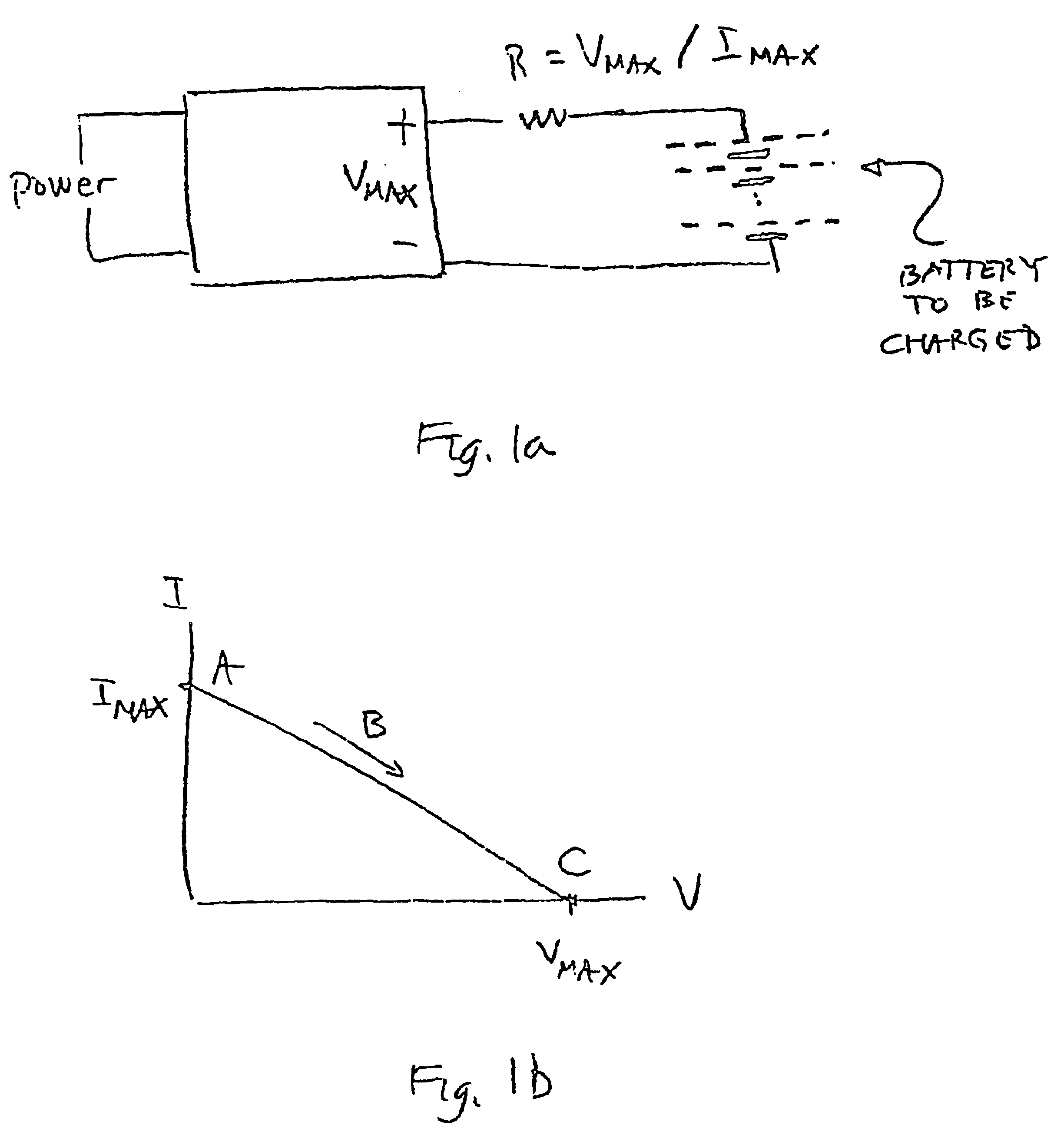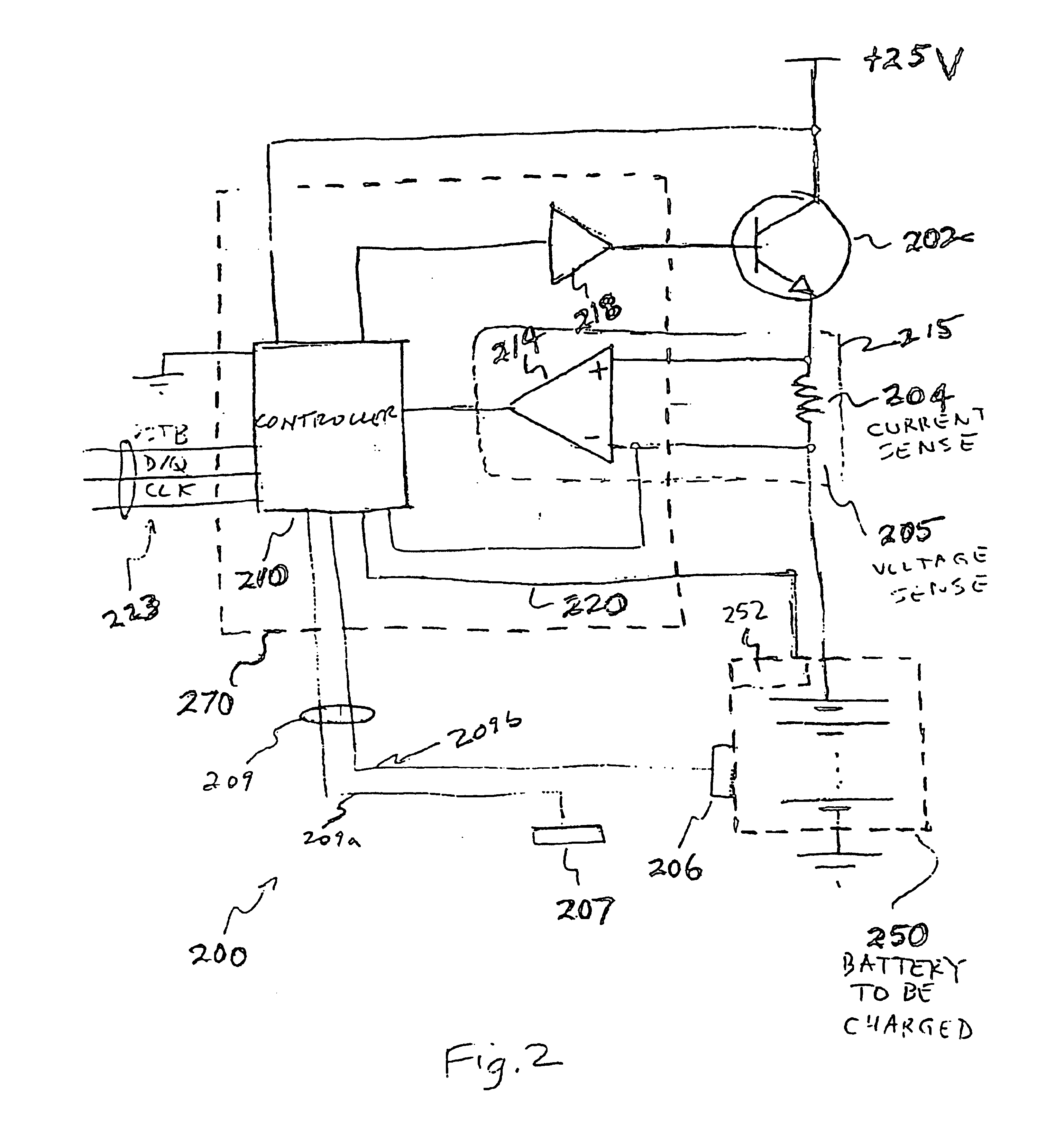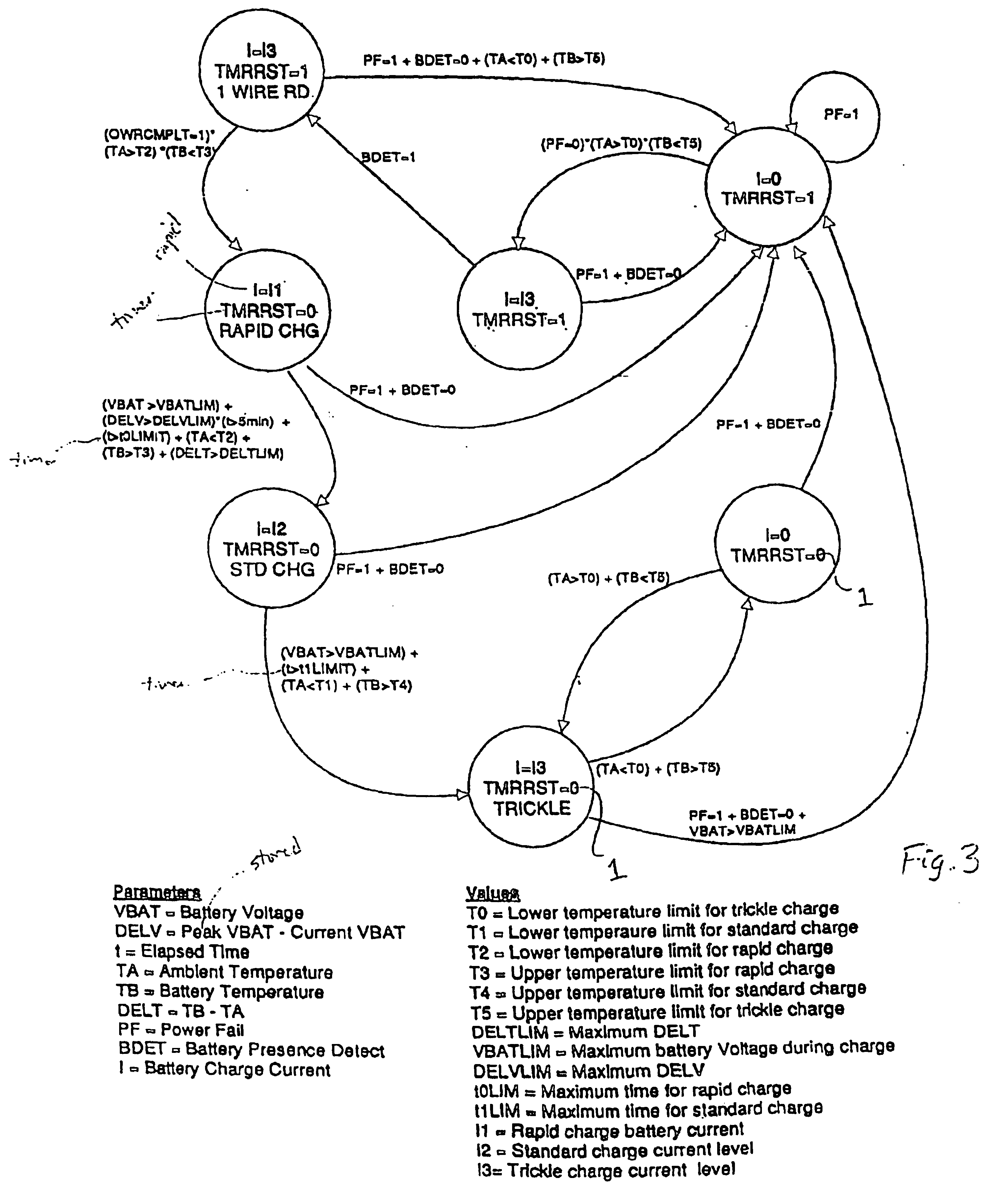Method of controlling the charging of a battery
a battery and charging method technology, applied in the field of electronic devices, can solve the problems of slow recharging, three hours of computing time, and requiring about three times as long to be recharged,
- Summary
- Abstract
- Description
- Claims
- Application Information
AI Technical Summary
Benefits of technology
Problems solved by technology
Method used
Image
Examples
Embodiment Construction
[0020]Functional Overview
[0021]FIG. 2 is a schematic functional block diagram of a first preferred embodiment battery charger, denoted generally by reference numeral 200, connected to charge battery pack 250 with imbedded one-wire communication module 252. Battery charger 200 includes power transistor 202, current sense resistor 204, voltage sense node 205, temperature sensor 206 affixed to battery pack 250, ambient temperature sensor 207, controller 210, operational amplifier 214, power transistor driver 218, one-wire bus 220, and three-wire bus 223. Portion 270 of battery charger 200 may be formed as a single integrated circuit and provide low cost and ruggedness.
[0022]Battery charger 200 can provide battery charging up to about 20 volts with 2.5 amp currents; this demands a separate power transistor 202 for cooling. (More generally, power transistor 202 could be replaced by a DC-to-DC converter.) Battery pack 250 may have various numbers of cells and cells of various chemistries ...
PUM
| Property | Measurement | Unit |
|---|---|---|
| computing time | aaaaa | aaaaa |
| time | aaaaa | aaaaa |
| time | aaaaa | aaaaa |
Abstract
Description
Claims
Application Information
 Login to View More
Login to View More - R&D
- Intellectual Property
- Life Sciences
- Materials
- Tech Scout
- Unparalleled Data Quality
- Higher Quality Content
- 60% Fewer Hallucinations
Browse by: Latest US Patents, China's latest patents, Technical Efficacy Thesaurus, Application Domain, Technology Topic, Popular Technical Reports.
© 2025 PatSnap. All rights reserved.Legal|Privacy policy|Modern Slavery Act Transparency Statement|Sitemap|About US| Contact US: help@patsnap.com



